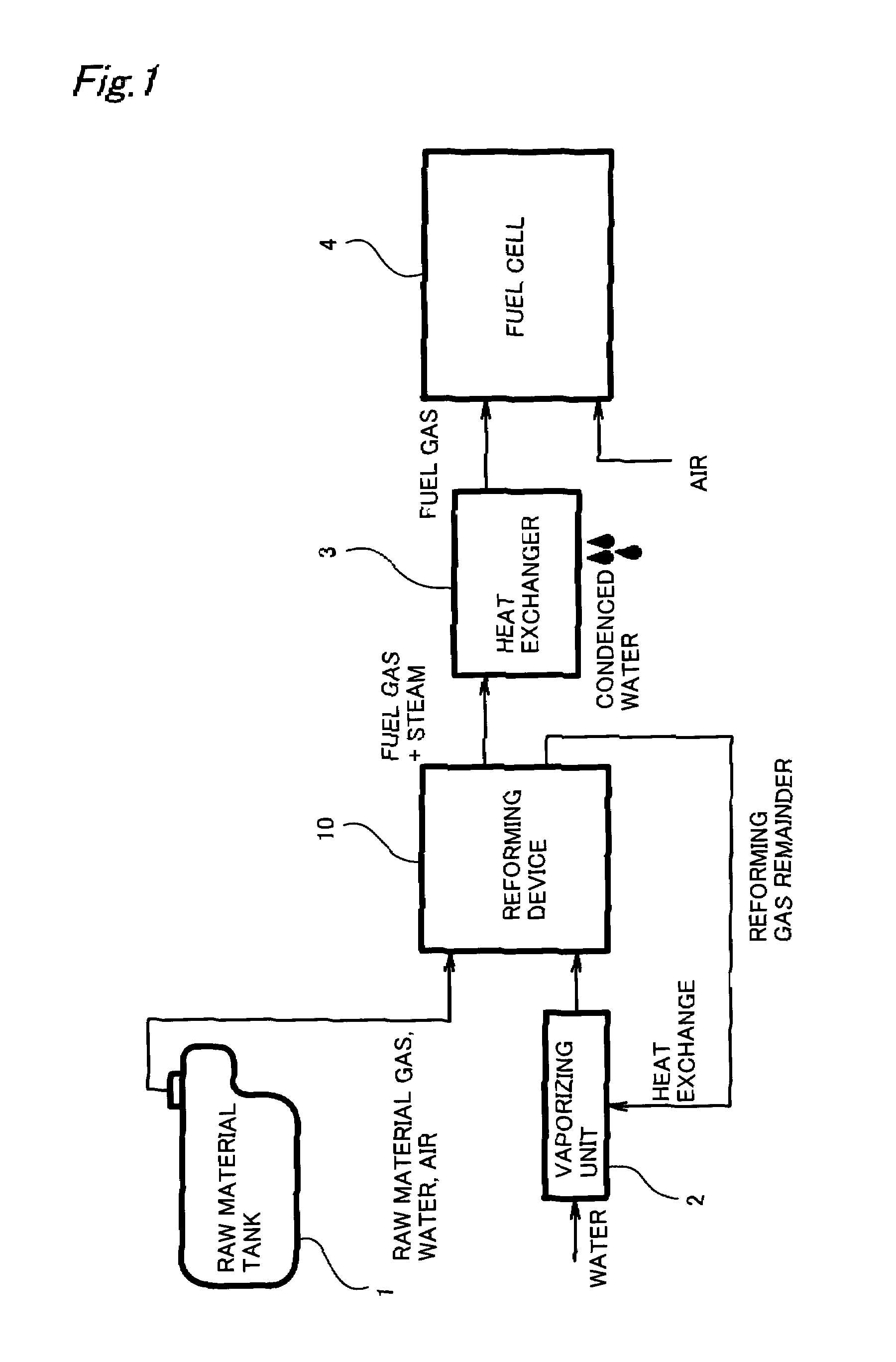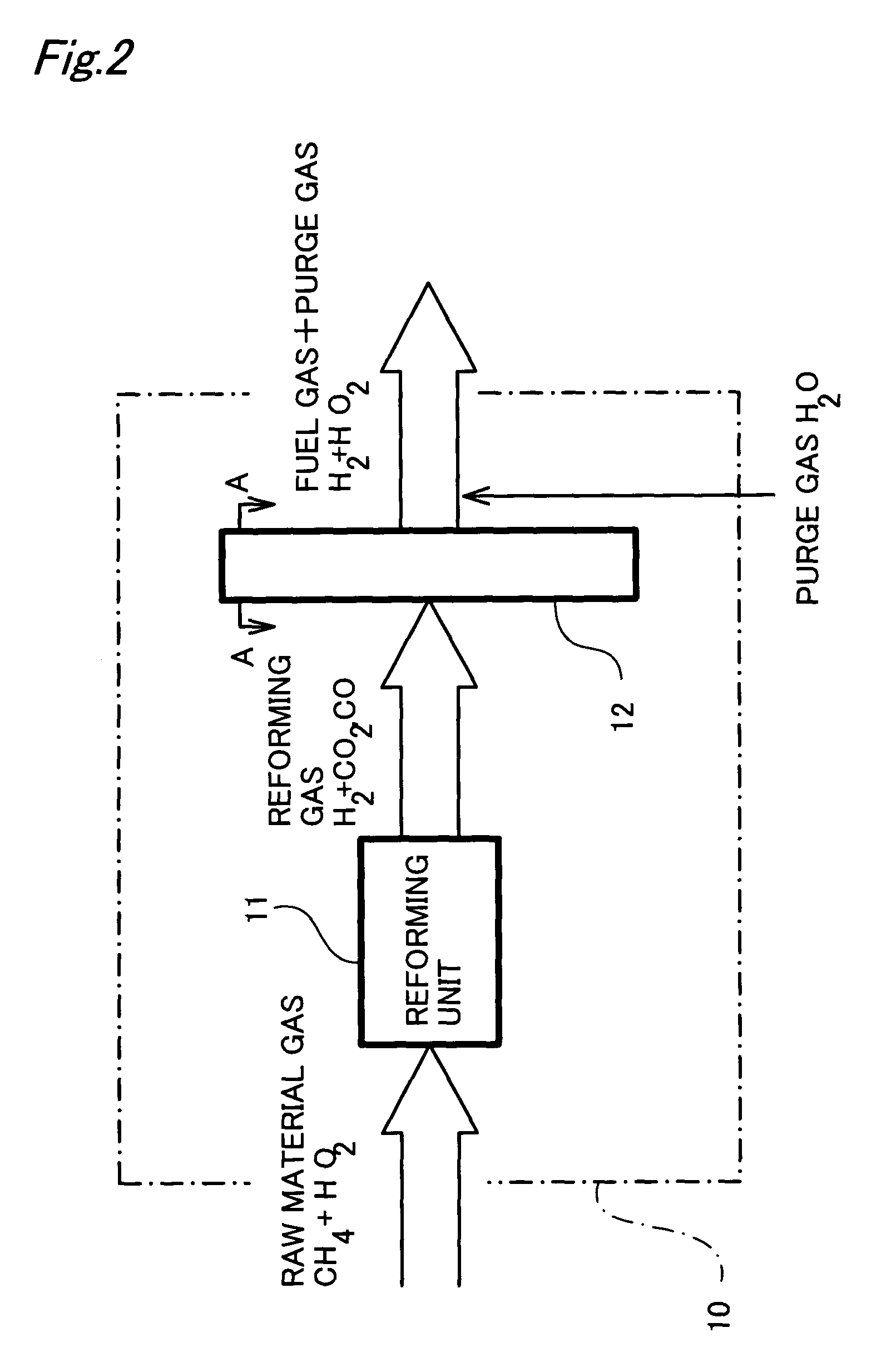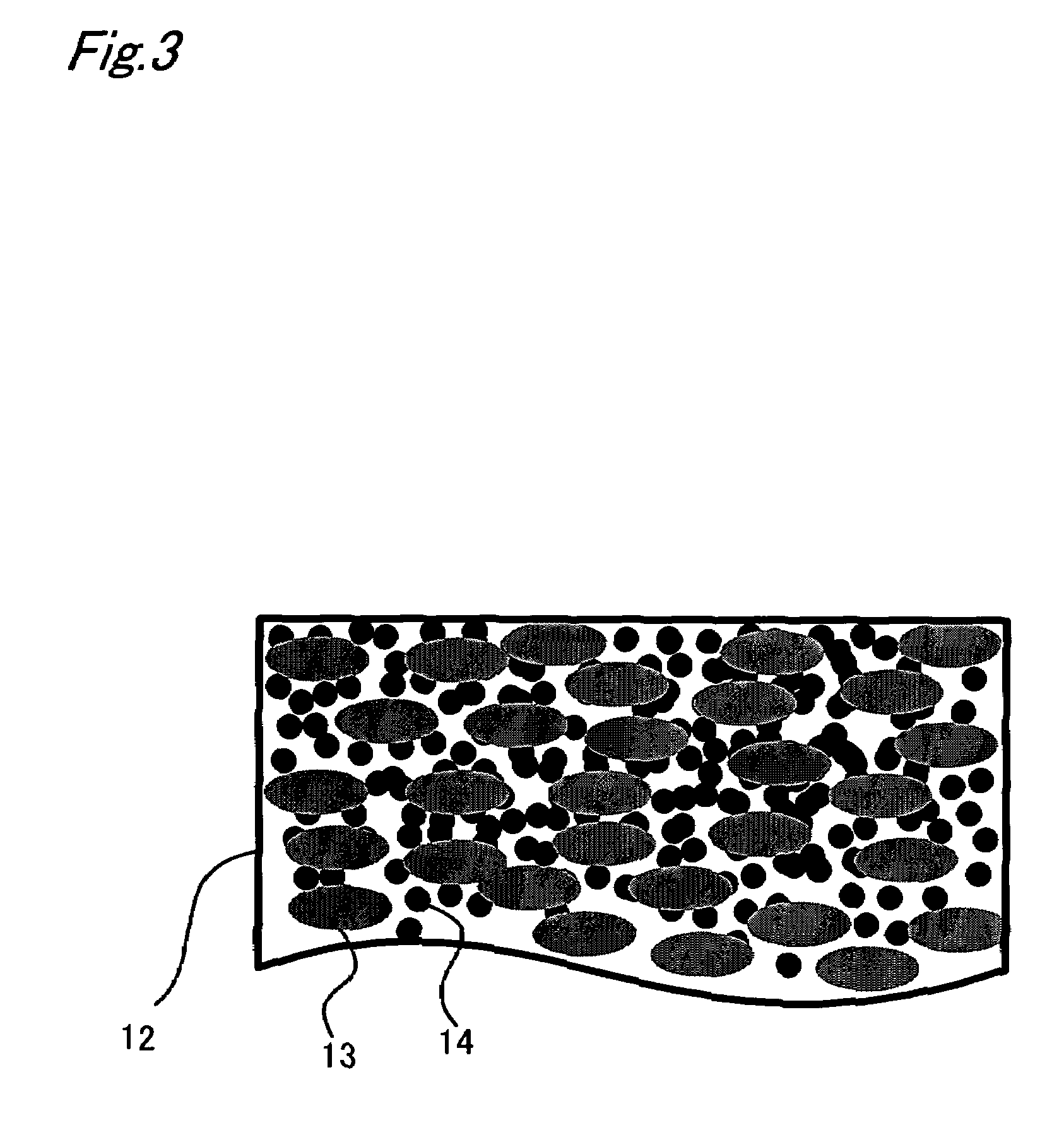Device forming fuel gas for fuel cell and composite material for hydrogen separation
a fuel cell and composite material technology, applied in catalyst activation/preparation, metal/metal-oxide/metal-hydroxide catalysts, bulk chemical production, etc., can solve the problems of other ill effects, slow hydrogen transmission speed, and thick film thickness
- Summary
- Abstract
- Description
- Claims
- Application Information
AI Technical Summary
Benefits of technology
Problems solved by technology
Method used
Image
Examples
second working example
G. Second Working Example
[0211]FIG. 17 is an explanatory diagram that shows the schematic structure of a fuel cell system as a second working example. With the first working example, we showed an example of using steam as the purge gas for fuel gas generating device 10. With the second working example, a raw material gas is used as the purge gas. Along with this, elements provided with the first working example such as vaporizer 2 for generating steam and heat exchanger 3 for condensing steam of the supplied gas to fuel cell 4 become unnecessary (see FIG. 1), so the overall system structure can be simplified.
[0212]With the second working example, the structure of fuel gas generating device 10A is also different from the first working example. With the first working example, we showed an example where mixed gas was generated using chemical reaction unit 11, and only the hydrogen in this was extracted using hydrogen separation composite 12. Specifically, with the first working example...
PUM
| Property | Measurement | Unit |
|---|---|---|
| thickness | aaaaa | aaaaa |
| operating temperature | aaaaa | aaaaa |
| temperature | aaaaa | aaaaa |
Abstract
Description
Claims
Application Information
 Login to View More
Login to View More - R&D
- Intellectual Property
- Life Sciences
- Materials
- Tech Scout
- Unparalleled Data Quality
- Higher Quality Content
- 60% Fewer Hallucinations
Browse by: Latest US Patents, China's latest patents, Technical Efficacy Thesaurus, Application Domain, Technology Topic, Popular Technical Reports.
© 2025 PatSnap. All rights reserved.Legal|Privacy policy|Modern Slavery Act Transparency Statement|Sitemap|About US| Contact US: help@patsnap.com



